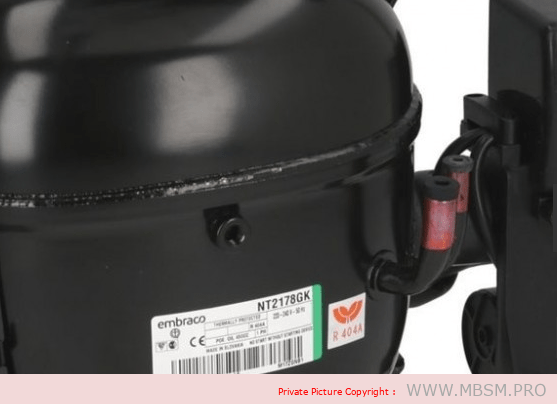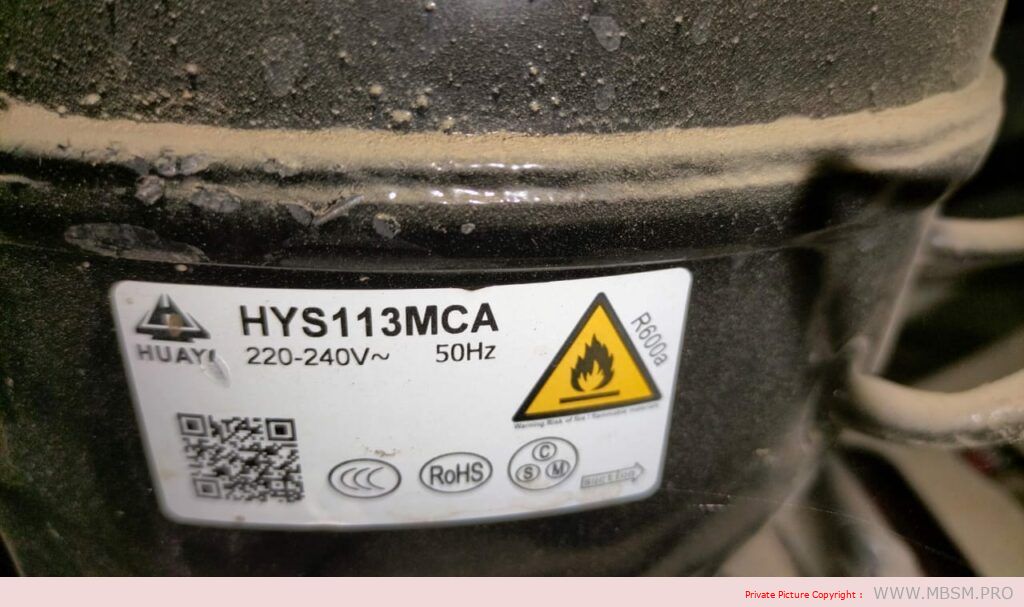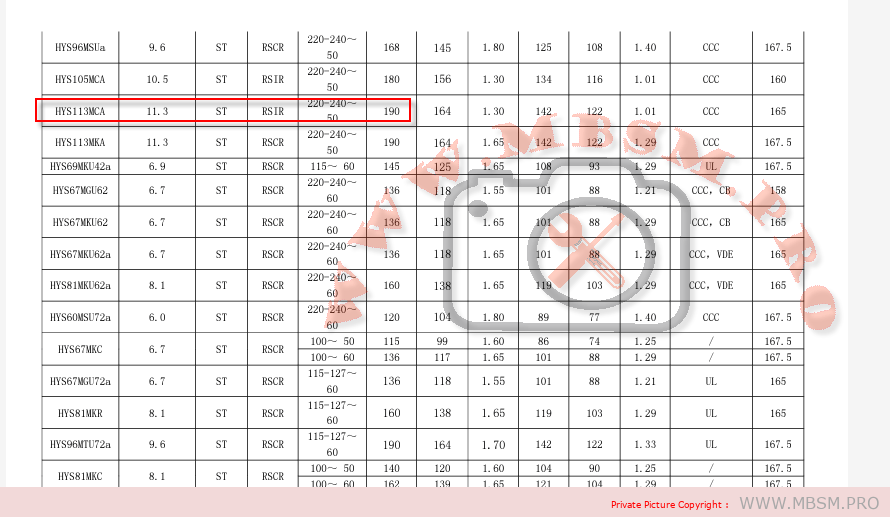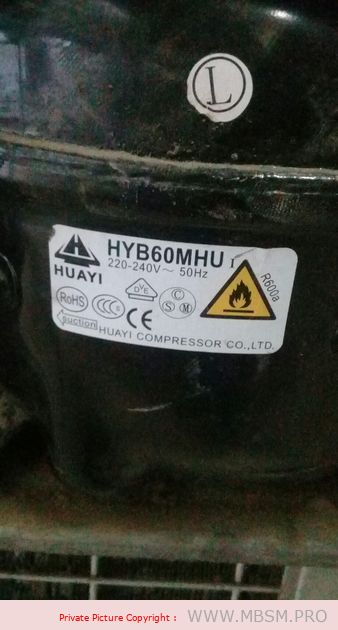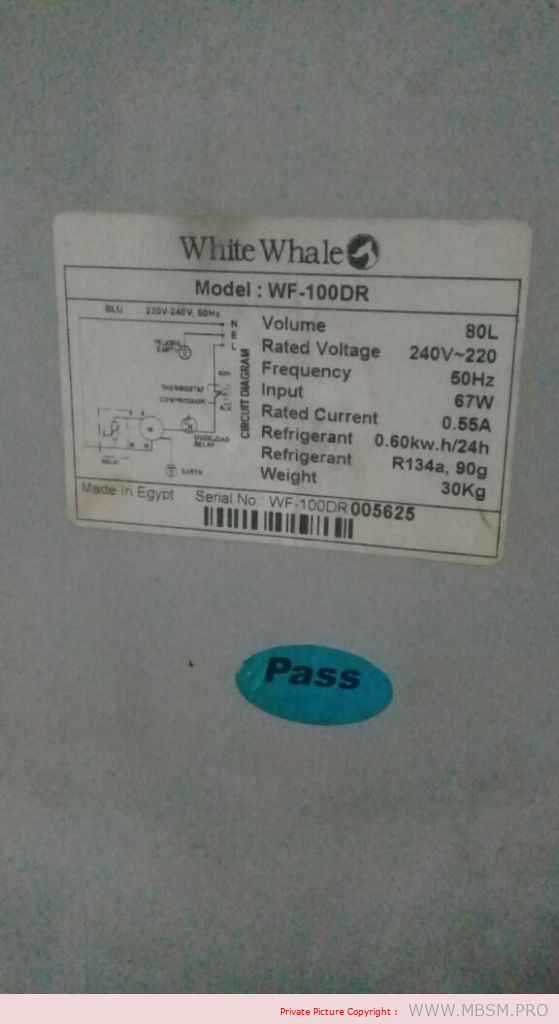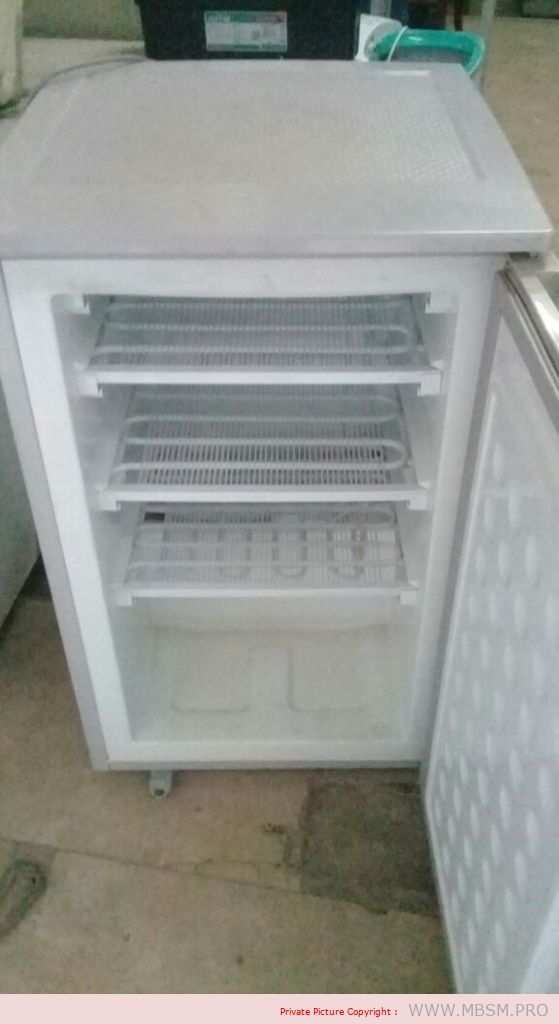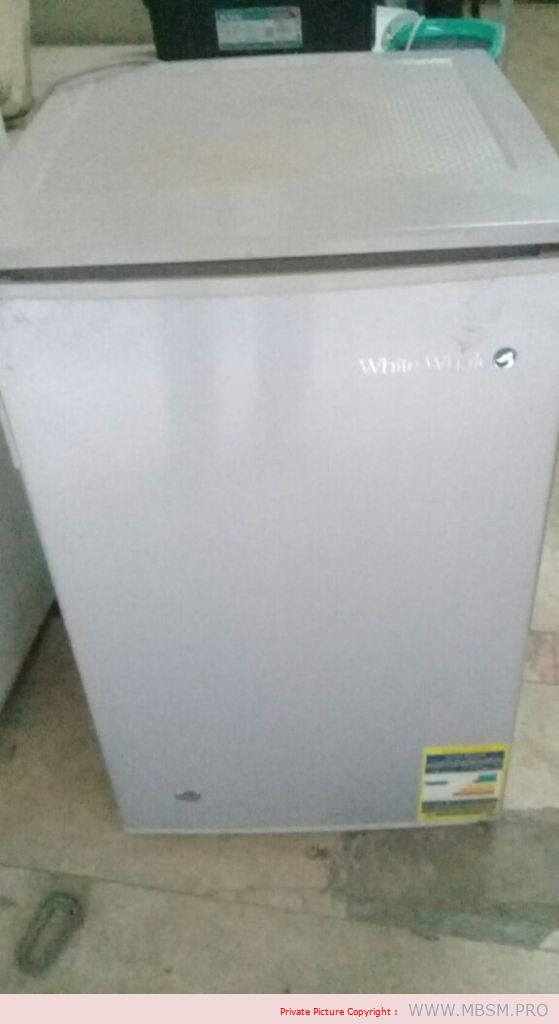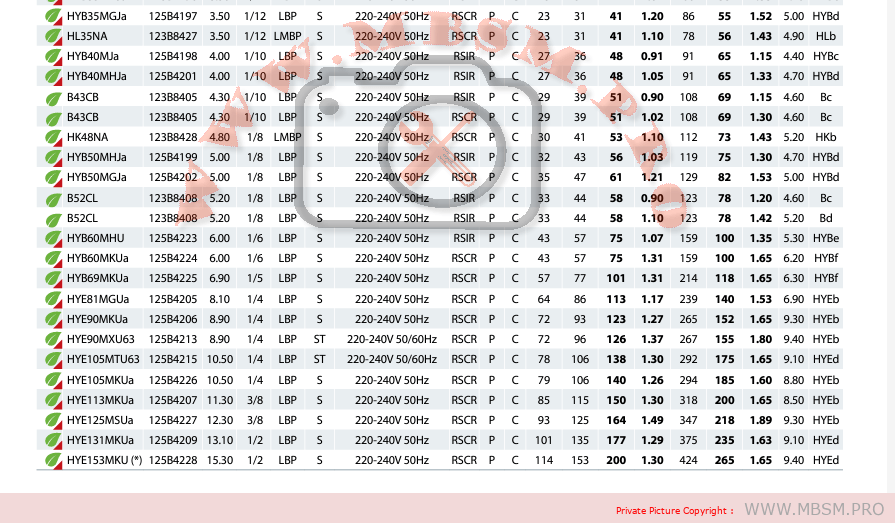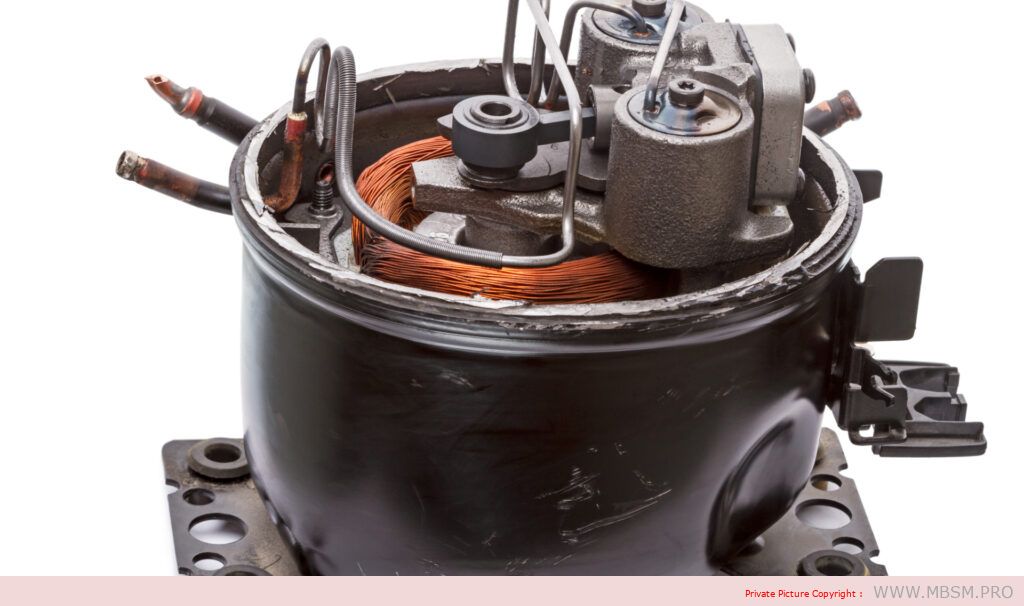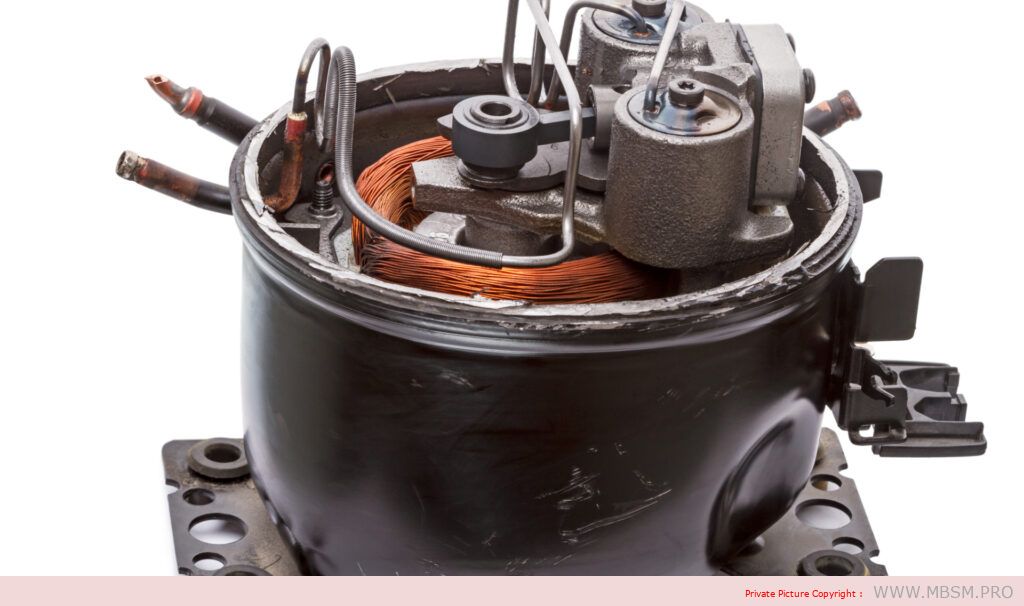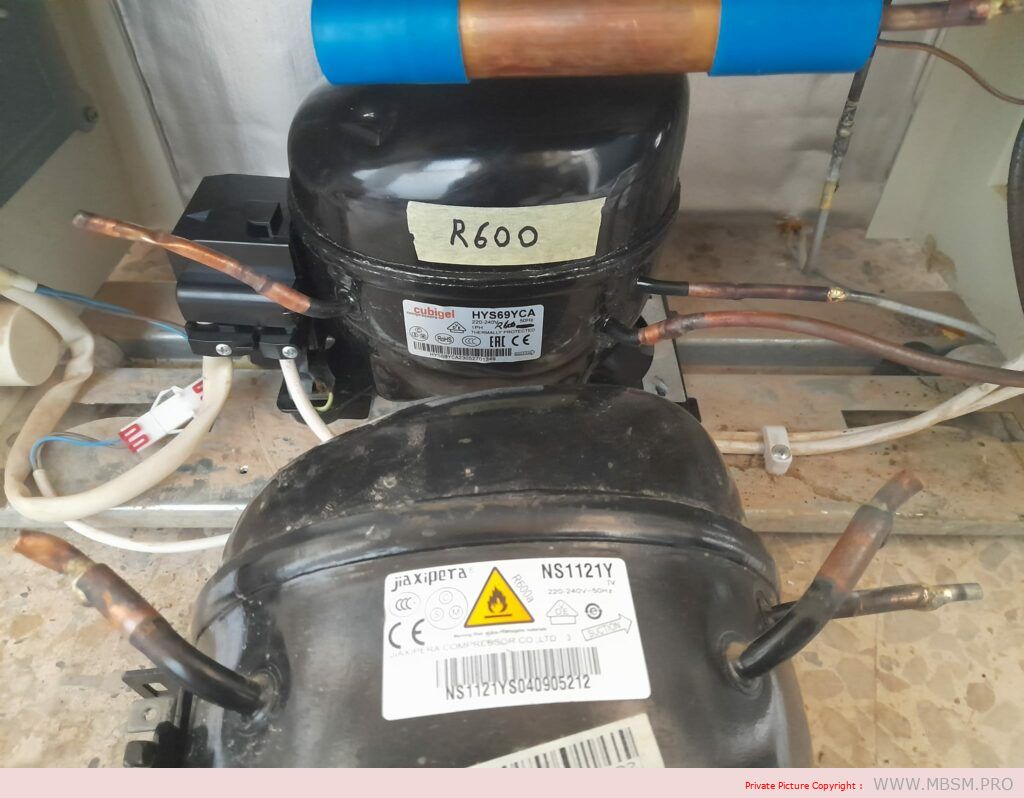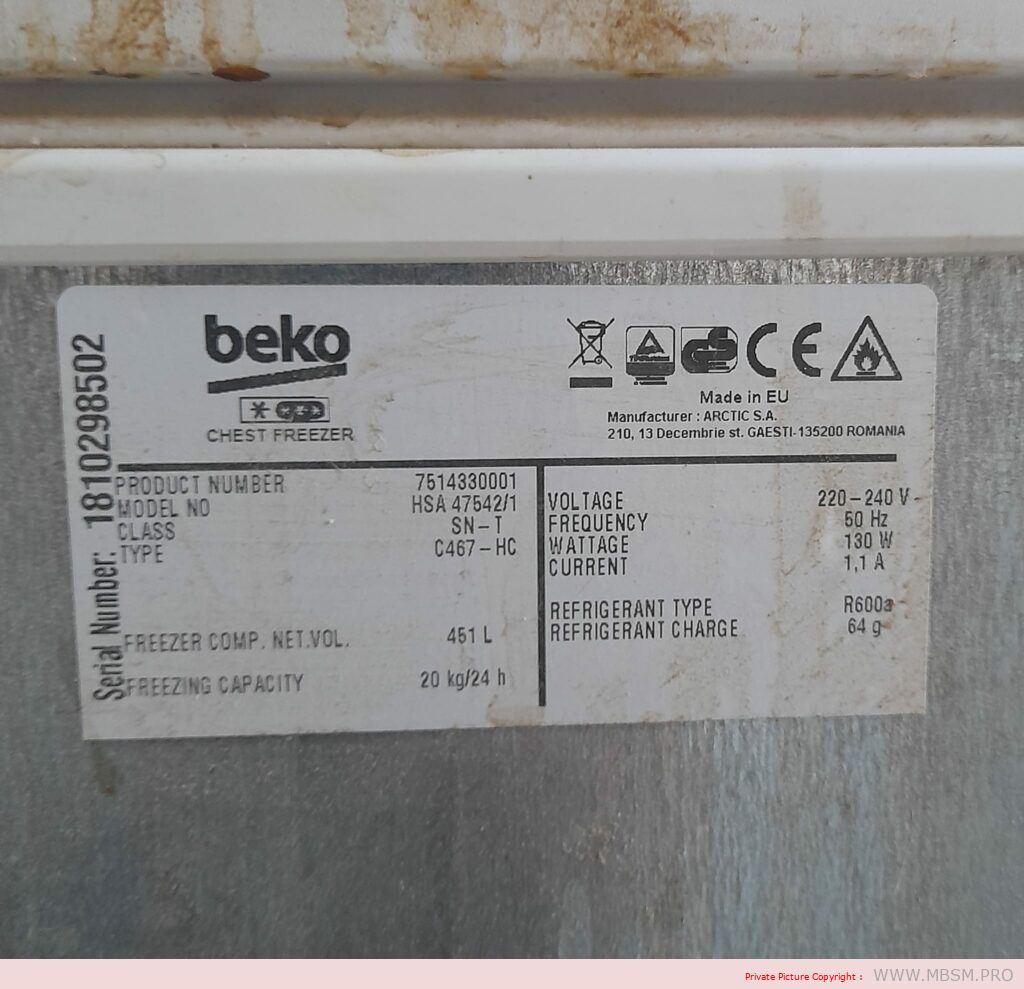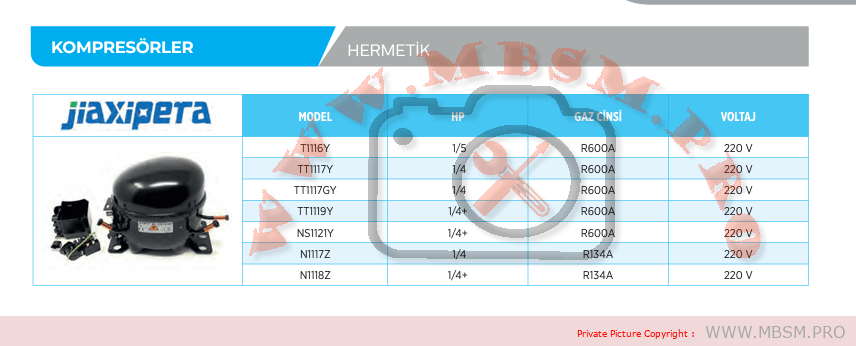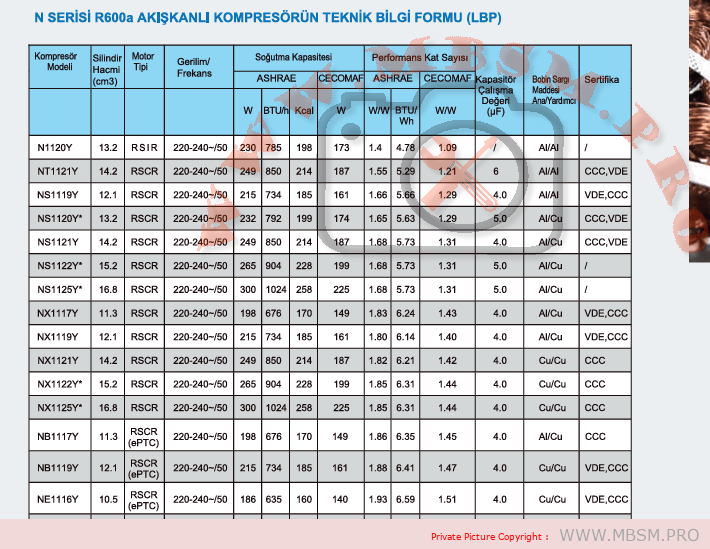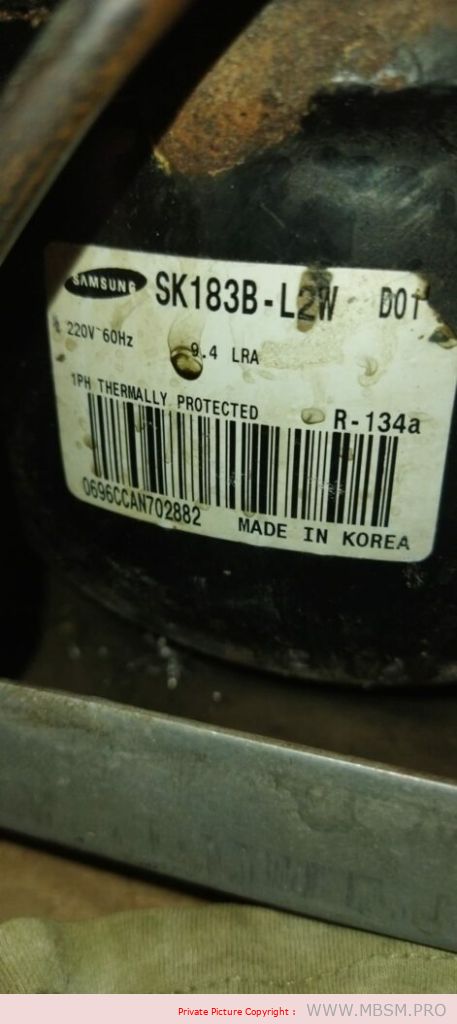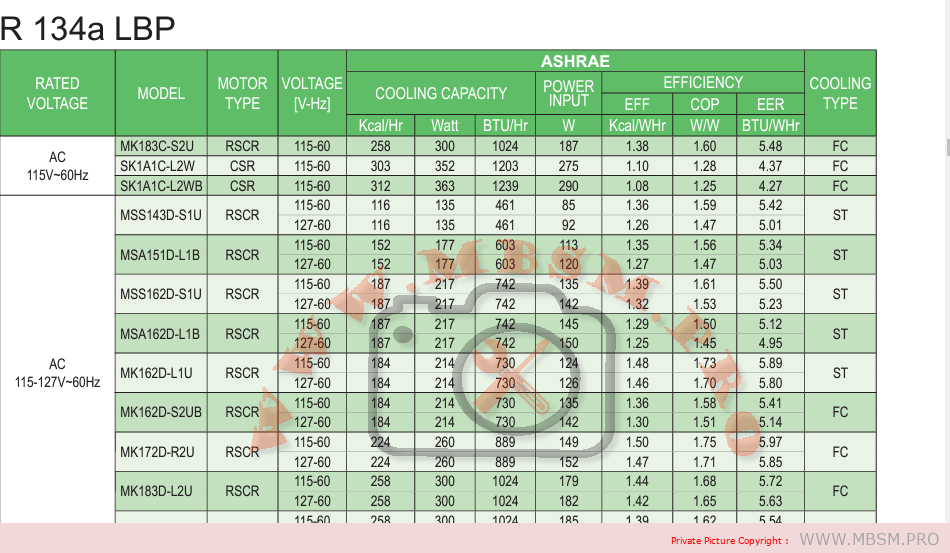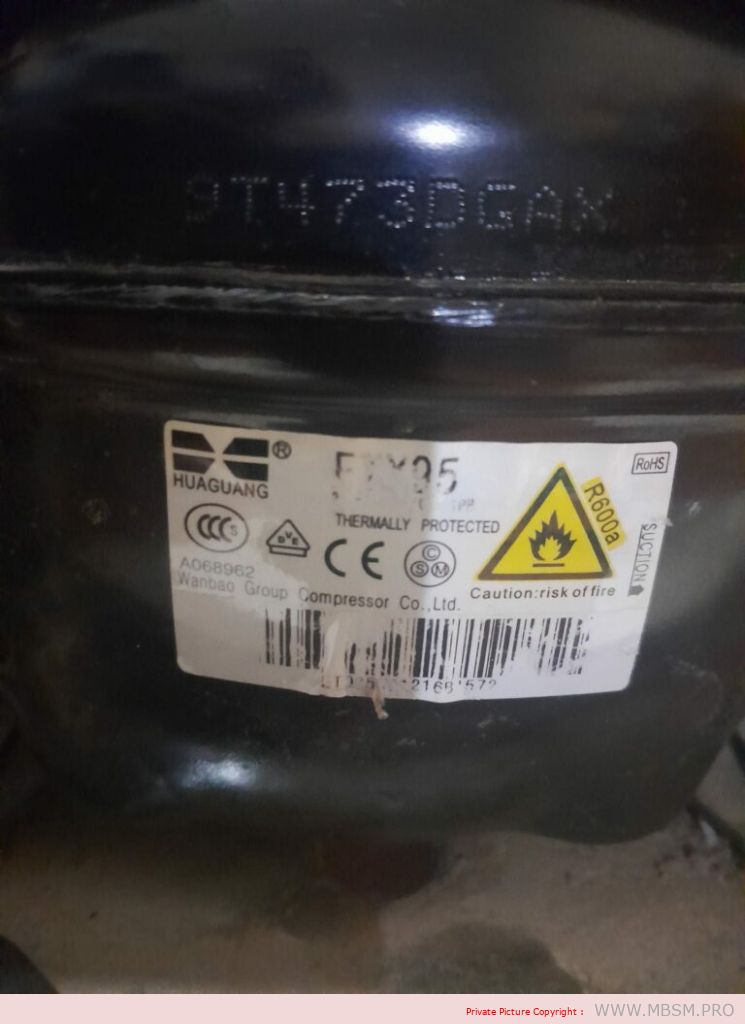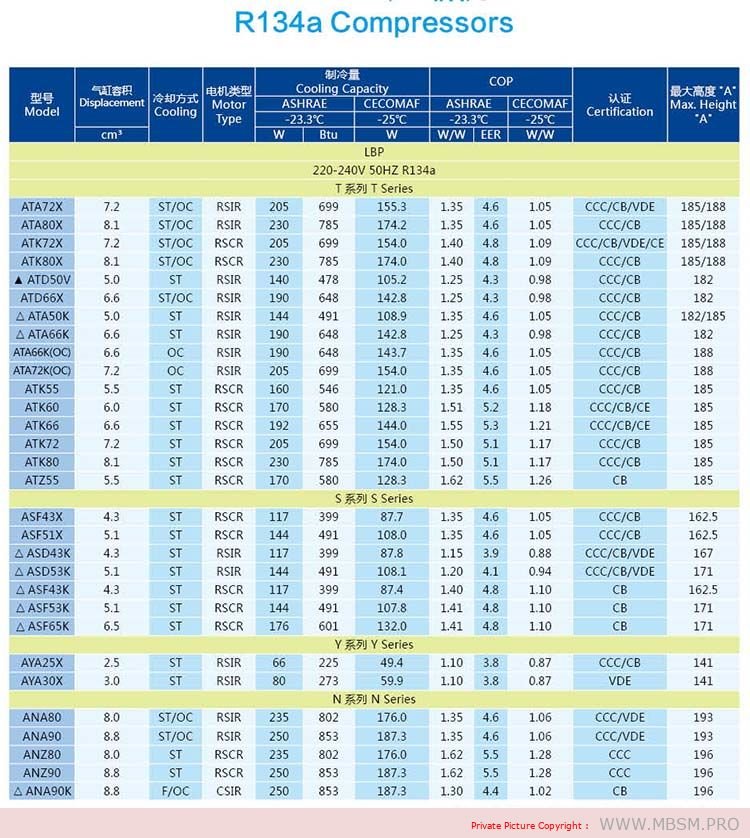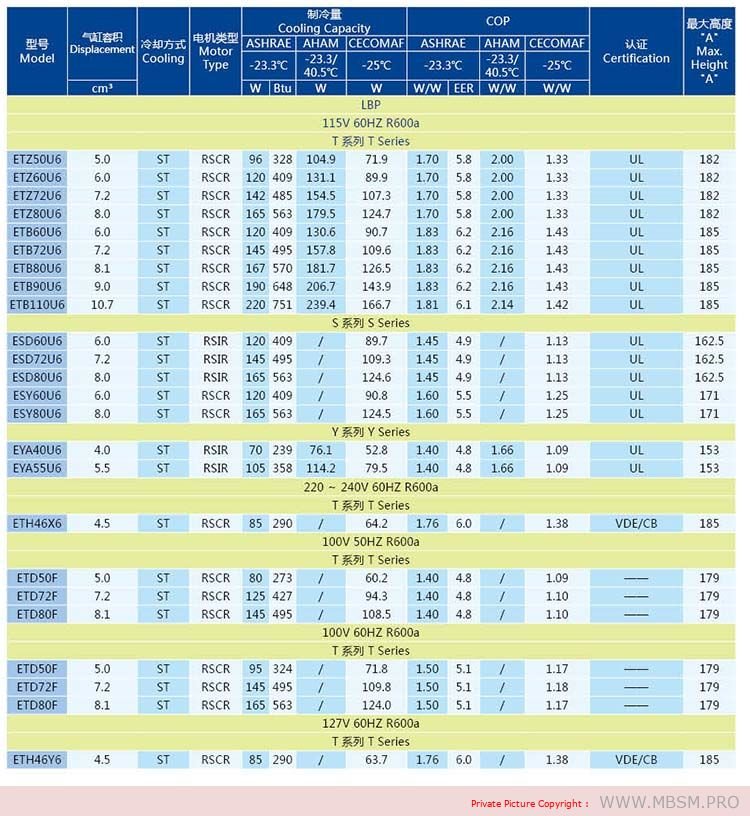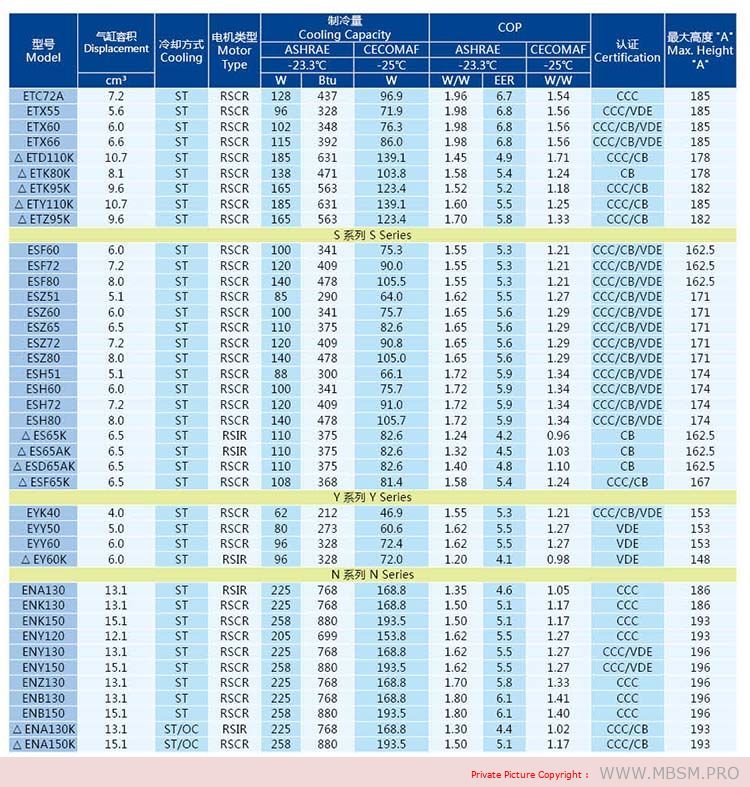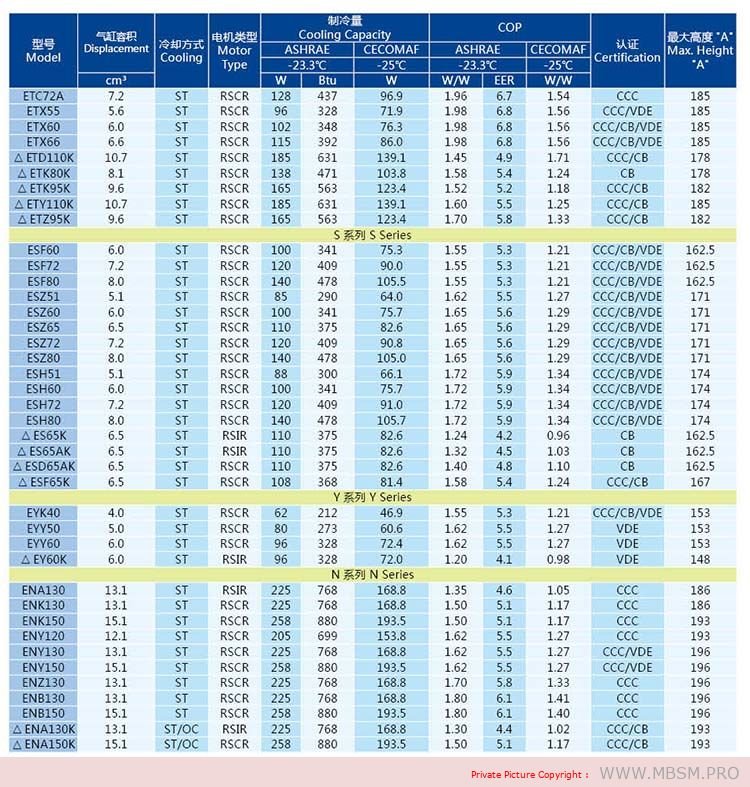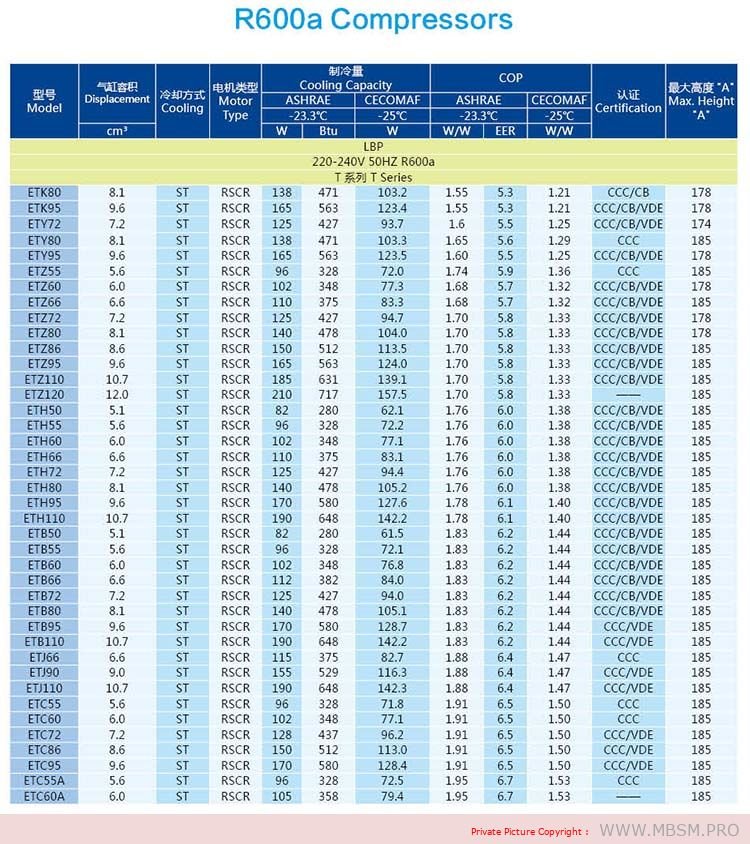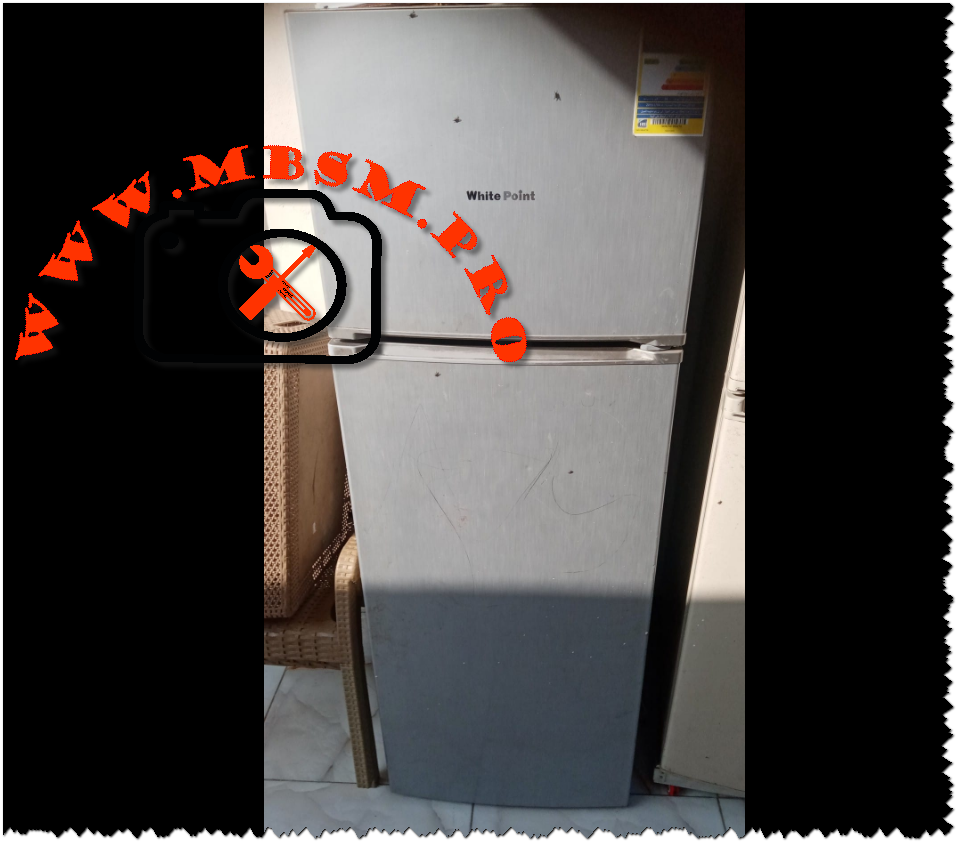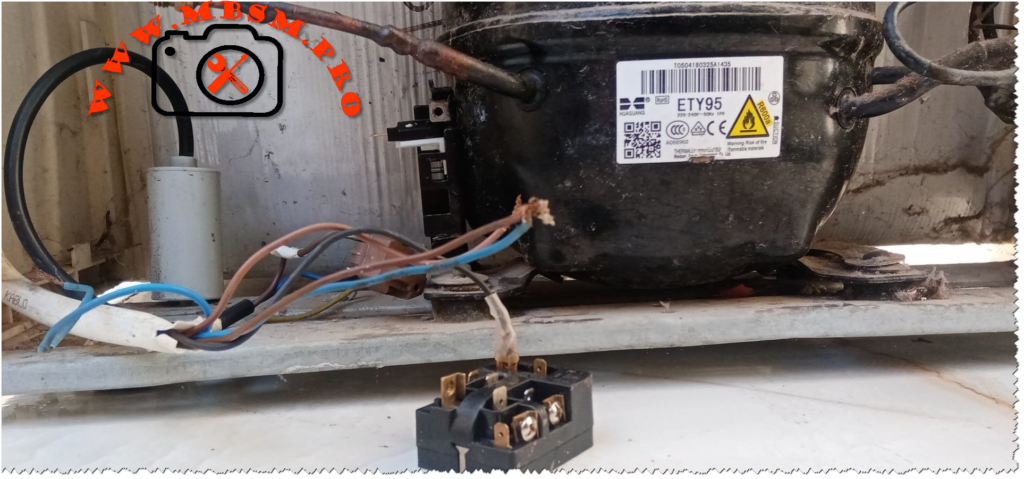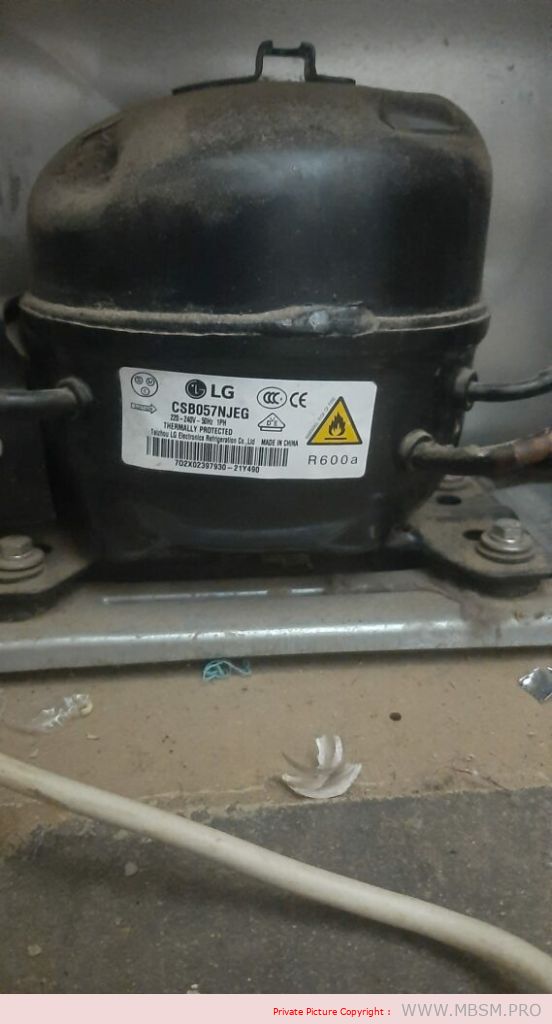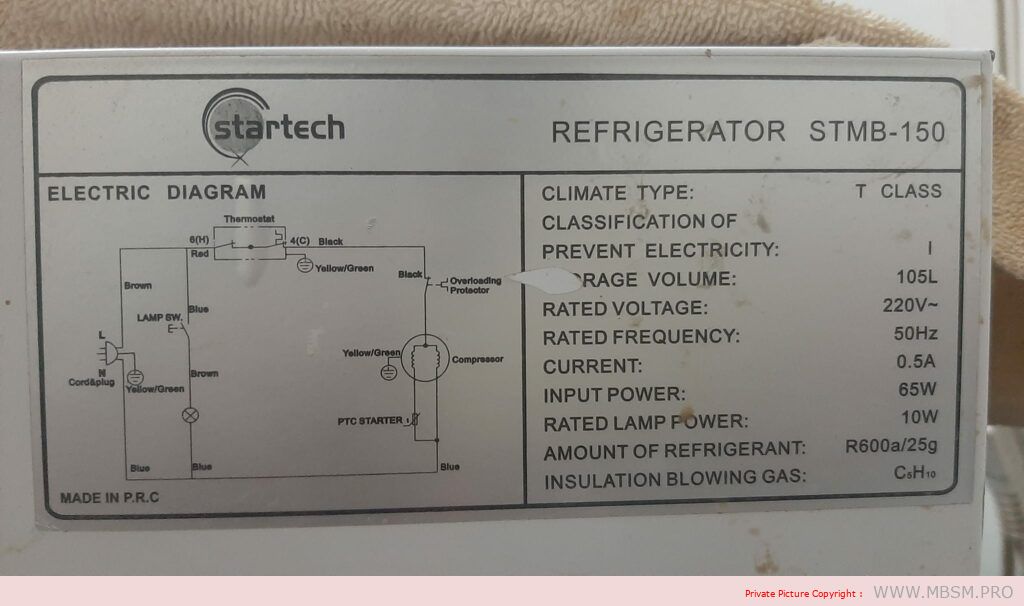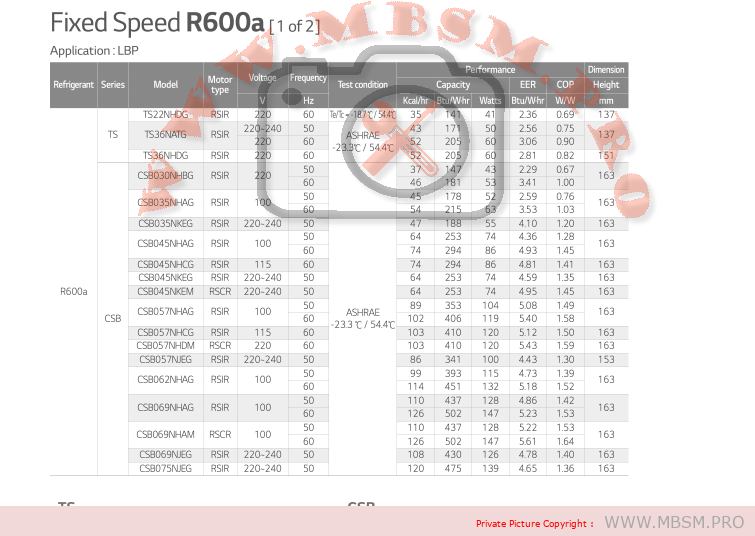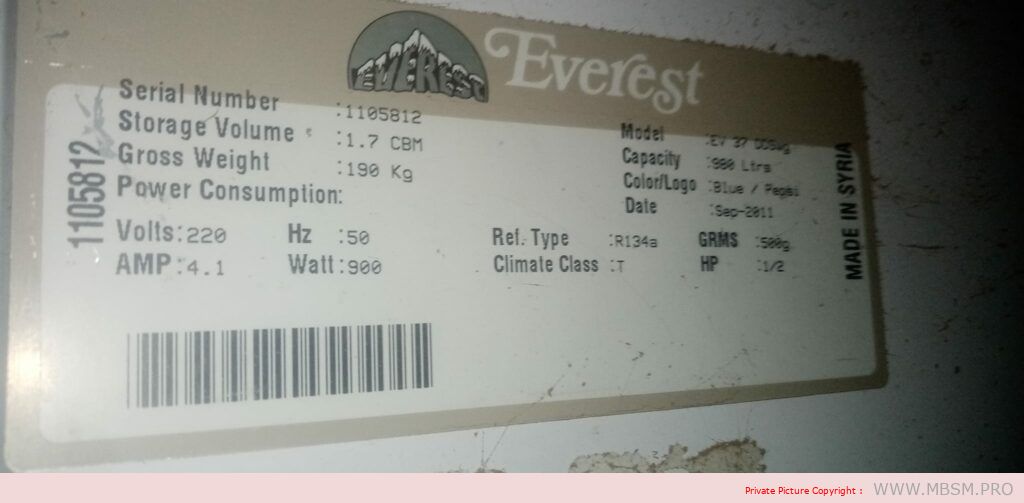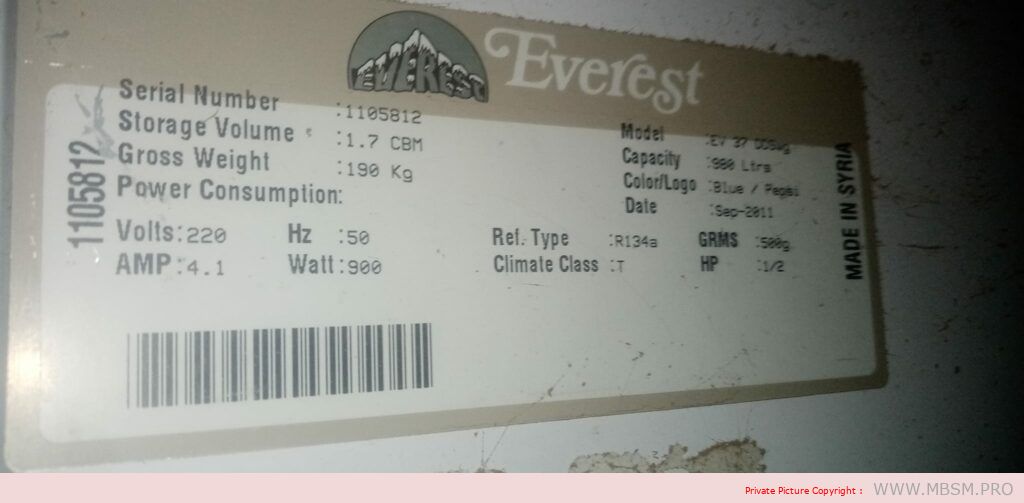If you need to replace a compressor in a refrigerator, you need to choose the right analogue.
Compressors are designed for different types of applications, namely, they are classified according to their temperature range.
LBP (Low Suction Pressure) indicates a range of low evaporation temperatures, typically -10°C to -35°C or even -45°C, these compressors are designed for use in freezers or refrigerator-freezers.
MBP (mean suction pressure) indicates the range of average evaporation temperatures, typically -20°C to 0°C. Such compressors are used in refrigerators, milk coolers, ice makers and water dispensers.
HBP (high suction pressure) indicates a range of high evaporation temperatures, typically -5°C to +15°C, and is used, for example, in dryers and individual liquid coolers. The additional letter T indicates a “tropical” design of the compressor. This means that the compressor is designed for high ambient temperatures and can operate in unstable power conditions
Also, when repairing refrigerators, it is important to take into account the length and diameter of the capillary tube.
Capillary tubes play an important role. It is always necessary to select the correct diameter and length of the capillary; their values cannot be changed arbitrarily.
About problems with capillary tubes.
One of the most common problems is clogged capillary tubes; they must be replaced with the same length and diameter.
If you install a larger diameter capillary tube than what was originally installed, the system will work, but the cooling efficiency will be lower.
Typically, capillaries are installed in compressors as follows:
73W compressors are equipped with a 0.63 mm (0.025 in) capillary tube.
92W compressors are equipped with a 0.71 mm (0.028 in) capillary tube.
122W compressors are equipped with a 0.71 mm (0.028 in) capillary tube.
184W compressors are equipped with a 0.8 mm (0.031 in) capillary tube.
245W compressors are equipped with a 0.1 mm (0.039 in) capillary tube.
368W compressors are equipped with a 1.4 mm (0.055 in) capillary tube.
Errors in selecting a capillary tube…
The parameters of the capillary tube are the internal diameter and length. In order for the capillary tube to match the power of the refrigeration system and the freon flow rate, which is determined by the volume of the piston, the diameter changes the freon flow rate.
For example, changing the diameter from 0.63 to 0.71 mm means that increasing the diameter by 0.127 mm doubles the freon flow. In addition, the longer the capillary tube, the slower the flow, and vice versa, the shorter the length, the greater the flow.
For example, if you replace a capillary tube without taking into account the old section, what will happen?
The first case: a smaller diameter or a larger length, this means a large resistance to the flow of freon inside the capillary tube, which leads to a lack of freon in the evaporator, so the inlet pressure decreases and the superheat increases. The pressure in the condenser or receiver increases, the efficiency of the compressor decreases, its temperature rises, and overload may occur.
Second case: larger diameter or shorter length, which means little resistance to the flow of freon inside the capillary tube, which increases the flow, and this causes high suction pressure, low superheat and the risk of liquid returning to the compressor inlet. At the same time, the liquid in the condenser easily passes through the capillary tube, causing less discharge pressure. This reduces the compression ratio of the piston, and over time the compressor can be damaged due to the flow (through the discharge valve) of liquid freon from the condenser into the piston area while the compressor is idle.
Below is a table of characteristics of compressors for refrigerators:
